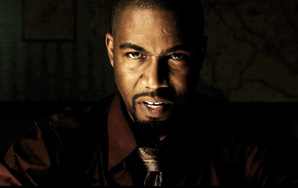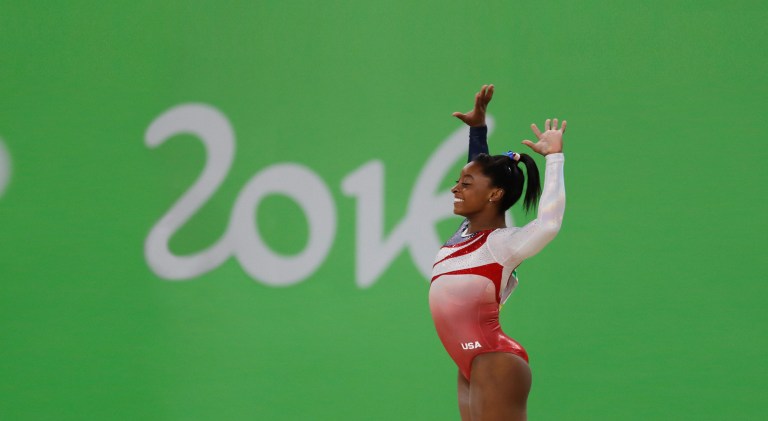The Evolution of Mortal Kombat
Rebirth also seems a conscious effort to reinvigorate the franchise by intriguing lapsed audiences, most notably those who, like me, were introduced to the series as children...The whole thing is shot in a downbeat, neo-noir-ish, horror-thriller style, immediately setting it apart from the hyped-up, candy-colored, jittering madness of the earlier games and films. The general…
By Ezra Riemer

It’s difficult to imagine from the modern geek’s perspective, but in the early nineties, when arcades were still an extant cultural entity and before Sony had yet swooped in and imbued the games’ industry with mainstream cool appeal, the fighters were king. Capcom’s “Street Fighter II” ensnared the attention of enthusiasts over the world, and head-to-head adversarial games were, in the digital sphere, where it was at. A couple of enterprising employees at the Midway game company named Ed Boon and John Tobias sought to replicate SFII’s success with a new property, and — in the wake of an unrealized project featuring Jean-Claude Van Damme (ironically, the star of the eventual Street Fighter film) —”Mortal Kombat” was born.
“Mortal Kombat”, the video game, was vivid and original, a vulgar American cousin to the Eastern fighting games. Whereas Japanese titles like “Street Fighter” and “Fatal Fury” had smooth, animated pixels for graphics and varied, complex character playing styles, “Mortal Kombat” featured digitized depictions of live-action performers kicking and punching and — perhaps appealing to Western tastes for familiarity — the initial characters were all fairly similar. Appreciated for over-the-top pandering more than quality development and polish, it sometimes came across as downright lazy, especially in its earlier incarnations. (At one point a good fourth of the characters were just the same ninja with different color schemes.) The game was a smash, loved not only for its appealing crassness but also for its wealth of mysteries, like secret opponents and the legendary “Fatality” finishing moves.
I was a toddler when the first “Mortal Kombat” was released in 1992, and my hands probably couldn’t fit around a controller much less manipulate the buttons to direct gruesome acts of carnage. But by the time I’d rolled into the later years of my first decade, I was thoroughly enthralled with electronic entertainment, and the Mortal Kombat series, at that point bearing three titles to its name, was in the prime of its life. I have many memories of learning the secrets of Fatalities and Friendships Raiden’s teleportation move and Scorpion’s grappling spear (“Get over here!”) on the Super Nintendo in my friend Evan’s basement.
The property became so popular that there were soon more than just games to occupy the attention of fans. The live-action Mortal Kombat movie, released in 1995 by New Line, was a source of frequent fascination for me when I saw it a year or two later. By that time, they’d already turned out a sequel, MK: Annihilation. Though the first movie was modestly celebrated as an enjoyable piece of camp, the second is pretty indefensible. It merits close analysis: I’ve seen it three or four times, with each viewing revealing a new terrible line or incompetent special effect. It’s like the most expensive Sci-Fi Channel movie ever made, although I’m sure Mega Snake is The Magnificent Ambersons compared to it. Annihilation’s only saving grace was its kind-of-awesome soundtrack (I think I still have the CD), featuring such techno luminaries as Juno Reactor and The Future Sound of London. It was inexplicably thrilling to experience this barrage of cultural garbage at such a vulnerable age, and I’d like to think it still informs much of my taste regarding popular fiction. Supplementing the films were other, even less-savory derivatives of the franchise, including a card game, a live stage show, and two TV series. Defenders of the Realm was a sanitized cartoon show that resembled a shoddyX-Men, and Mortal Kombat: Conquest was a prequel that was like a darker, less coherent version of that Kevin Sorbo Hercules show. I have fond memories of watching both of these.
The license holders have, for whatever silly reason, been attempting to get a third MK film off the ground for a good decade. Faced with the underwhelming performance of Annihilation and myriad setbacks, including the bankruptcy of Midway — the property is now owned by Warner Bros. — the proposed MK: Devastation never came together. (Sad news for the anticipated follow-up MK: Expectoration). On June 7, a short film titled Mortal Kombat: Rebirth was posted on YouTube, without explanation. Confusingly, a new MK video game was announced a couple days later, but the film had nothing to do with the video. Things were clarified soon after by the actress Jeri Ryan, who plays Sonya Blade in the film, and it was revealed to be a fancy test conceived by a director as a proof-of-concept to WB, a “reboot” intended to establish the series characters in a real-world setting and illustrate their strength in a glossy modern narrative.
Rebirth also seems a conscious effort to reinvigorate the franchise by intriguing lapsed audiences, most notably those who, like me, were introduced to the series as children. The plot concerns officer Jackson Briggs —“Jax” from the original — briefing a gangster on a rogues gallery of killers he’s meant to assassinate. They set up each one with a vignette detailing their profile, only at the end revealing the classic MK fighter they’re meant to embody. (“Code name: Reptile,” etc.) The whole thing is shot in a downbeat, neo-noir-ish, horror-thriller style, immediately setting it apart from the hyped-up, candy-colored, jittering madness of the earlier games and films. The general consensus from Internet prognosticators, once they figured out what the hell it was, was approval. I’m not so sure it works. The transition from the D-grade hackwork of Annihilation to this new, more refined thing is jarring—that classic had nothing resembling quality, but at the very least it wasn’t bland, posturing genre mush. The most egregious error, I think, of Rebirth is that by casting the franchise in this new, “gritty” tone, it strips it of the bizarre exceptionalism enjoyed by other incarnations of the series. The brawlers in MK may have all played basically the same, but their loud, flamboyant design spoke to players; nuanced subtlety wasn’t a valued attribute. Baraka, for instance, is maybe my favorite MK character, a craggy-faced demon with giant blades protruding from his arms. Here he’s realized as an insane plastic surgeon who cuts up his face after killing his patients. It’s no less silly, but in my estimation not as gaudily memorable. Check out Liu Kang vs. Baraka and fellow gremlins in Annihilation:
[youtube https://www.youtube.com/watch?v=hHUv9MknuYk&hl=en_US&fs=1&rel=0&hd=1%5D
My last interaction with the games must have been around 1998, while the brand — once influential enough to rile Joe Lieberman with its eye-popping gore prompting the formation of an entire organization dedicated to software ratings — was slipping quietly into cultural irrelevance. Somewhere between the spin-off “Mortal Kombat Mythologies: Sub-Zero” and the anthology “MK Trilogy”, it occurred to me that their herky-jerky 2-D graphics were woefully obsolete, and their storyline was utter nonsense. (All I could relate is some hokum about multiple dimensional “realms” ruled by “elder gods” who hold a martial arts tournament for some reason. It’s H.P Lovecraft meets Enter the Dragon, I guess.) Midway’s team revived their game years later with “MK: Deadly Alliance,” and the studio’s been steadily plugging away ever since, on through bankruptcy. (They’re now called NetherRealm Studios.) Even though I don’t follow it any more, the new game’s promise of a return to the series’ gonzo-violent roots is a relief—the last time I saw these characters was in trailers for the dismayingly Teen-rated “Mortal Kombat vs. DC Universe,” featuring non-killers Batman and Wonder Woman, I presume. For the sake of impressionable game-playing youths everywhere, I hope they stay true to their roots and don’t Saw-ify the game as this short tries to do the films. The MK brand isn’t complicated, but it should be suitably ridiculous. Lest we forget, the franchise’s defining statement is the Fatality, completely unnecessary and complex button combinations that produced astonishing depictions of mutilation. As far as I’m concerned, Boon and Tobias should pump up the improbable blood and guts, let the demons run free, really let their freak flag fly. These fighters were never meant to be kept down to Earth. ![]()




